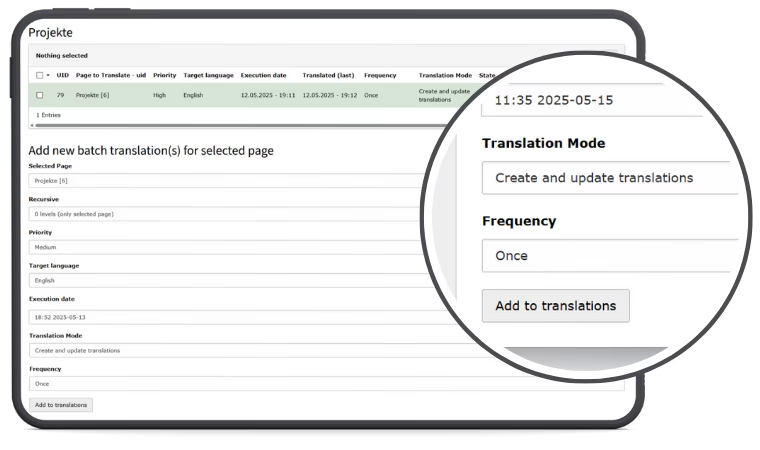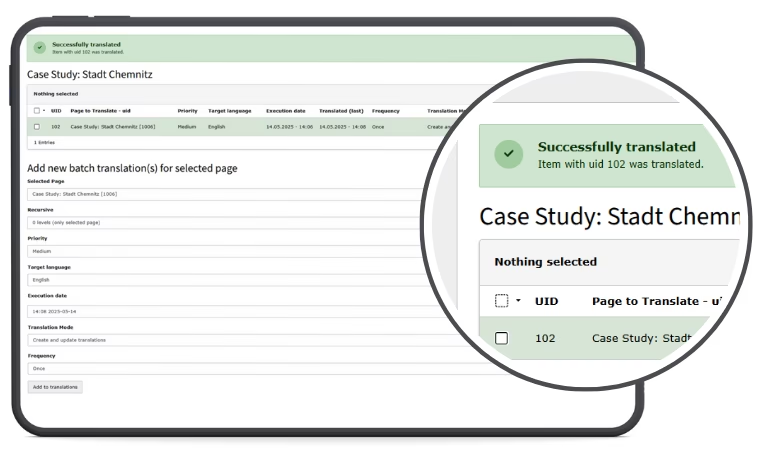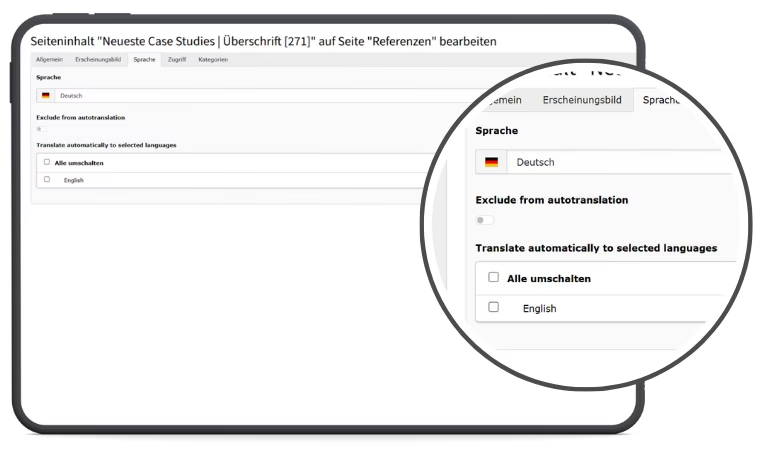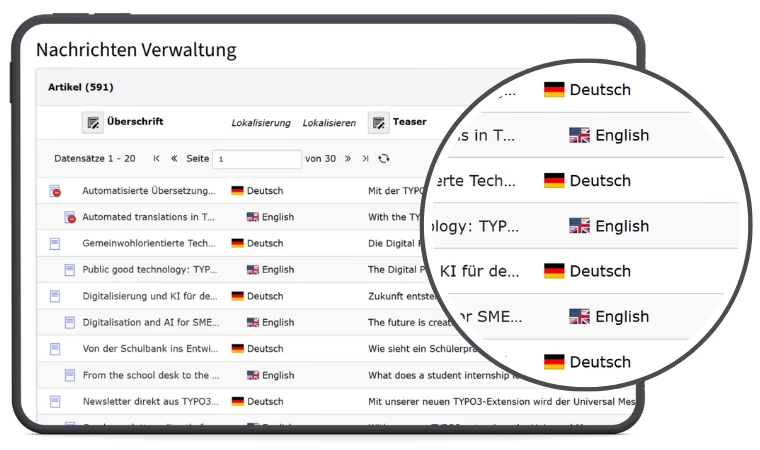Automated translations in TYPO3: How we simplify everyday editorial work in many languages
In our day-to-day work with TYPO3, we frequently encounter customers who need to provide content in multiple languages - whether for international locations, tourism offers or the export market.
The challenge: translations are often "copy-paste tasks", prone to errors and at the same time need to be closely interlinked with the editorial workflow.
This is exactly where Netresearch's solution comes into play: the TYPO3 extension autotranslate is used on the basis of DeepL AI, which is regularly used in customer projects and is individually configured and customised for the respective project.
Netresearch overcomes three main problems of multilingual sites
Netresearch alleviates several typical pain points in multilingual content maintenance by intelligently adapting the editing process for TYPO3 system operators:
- Initial translations at the touch of a button
Especially when a project becomes multilingual for the first time or a new language is added, the editorial team is often faced with the mammoth task of manually translating all existing content. The solution offered by Netresearch largely eliminates this effort - complete content areas can be automatically translated into all desired languages at the touch of a button or at scheduled times. This saves days to weeks of editorial work and enables a quick introduction to multilingualism. - Small changes - big impact
Typically, editors often update content in the main language first. However, even small changes - such as a new contact person, an adjusted opening time or an addition to the body text - have to be made manually in each additional language. If this is not done, inconsistencies arise. With the Netresearch solution, this is a thing of the past: changes are recognised and all language variants are automatically updated synchronously - fully integrated into everyday editorial work. - New content for many languages
Another common scenario: new news articles, pages or products have to be translated into all languages - often under time pressure. This can be a real bottleneck, especially with five or more languages. Here too, the solution comes into play: as soon as new content is created or published, it is translated into all target languages in real time - without any manual effort in the backend.
The onboarding process: How does Netresearch support the switch to automatic translations?
Before the solution goes live, the following points should be clarified together with the customer:
- Clarify the language strategy: Which languages are maintained and how often? Are there "primary languages" from which translations are made?
Define content selection: Not all content needs to be translated automatically. We clarify whether, for example, only news or certain page areas are affected.
Coordinate quality assurance: Should translations go live automatically or be checked first?
On this basis, we configure the solution for the respective project and ensure that the automated translations are perfectly integrated into the existing editorial processes.
Automated translation in real time
Unlike other solutions on the market, Netresearch offers real-time translation: as soon as content is created, changed or published, the extension automatically analyses the language status and immediately generates a translation into the desired target languages if required. This works independently of scheduled tasks in the background and ensures that content is translated seamlessly and quickly - without editors having to think about the translation.
This creates a workflow in which editors can concentrate fully on their native language - all other languages follow automatically and immediately.
Experience and a realistic view of complexity
The introduction of automated translations is a big step - especially for complex, long-established TYPO3 installations with many pages, languages and individual structures. In addition, technical solutions for automated translations are a relatively new and untested area. Therefore, implementations rarely run completely smoothly. For example, in certain TYPO3 projects, content elements based on grid or mask must be considered separately in order to achieve consistent results.
As an agency with extensive experience in extension integration, Netresearch actively supports the process. It ensures that the automated translations arrive reliably and consistently in the content management system and that the translation quality remains guaranteed in the long term. Most recently, valuable experience was gained with the translation of 60 million characters in 3 different languages in a relaunch project for a public sector client.
For simpler installations, language automation can be implemented very quickly - within 2 to 3 days. For more complex systems, integration can take a few days longer.
Reporting and transparency
A functioning translation process needs an overview. That's why Netresearch relies on clear, comprehensible mechanisms for control and feedback in the TYPO3 backend:
- What content has been translated?
Which languages are currently available?
Were there any problems with individual pages or elements?
This information is provided to the client in such a way that adjustments can be made if necessary - without losing the overview.
Conclusion: Automation that really helps
The autotranslate extension is not an end in itself, but a strategic tool that can be used specifically in larger multilingual projects. The advantages are evident in practice:
- Relief for the editorial team by eliminating time-consuming, monotonous copy-and-paste tasks
- Acceleration of translation and publishing processes
- High consistency in presentation across all language versions
- Fewer manual errors thanks to automated processes
With the right integration into existing TYPO3 systems and a robust process setup, automatic translation becomes a sustainable building block for efficient, multilingual websites.










